By: Amanda Sia
“You drive me bananas!”
When I first started learning English in elementary school, this was one of the English idioms that really stuck out to me because it included a fruit. Other fruit-related phrases and idioms that piqued my interest included the classic, “You’re the apple of my eye!” and “He’s just cherry picking”.
While there is no shortage of English fruit-related idioms, the variety of bananas sold in many modern grocery stores today is sadly, dismal. Although there are more than 1000 varieties of bananas in the world, 99% of bananas sold for export today are of the Cavendish variety, pictured below.
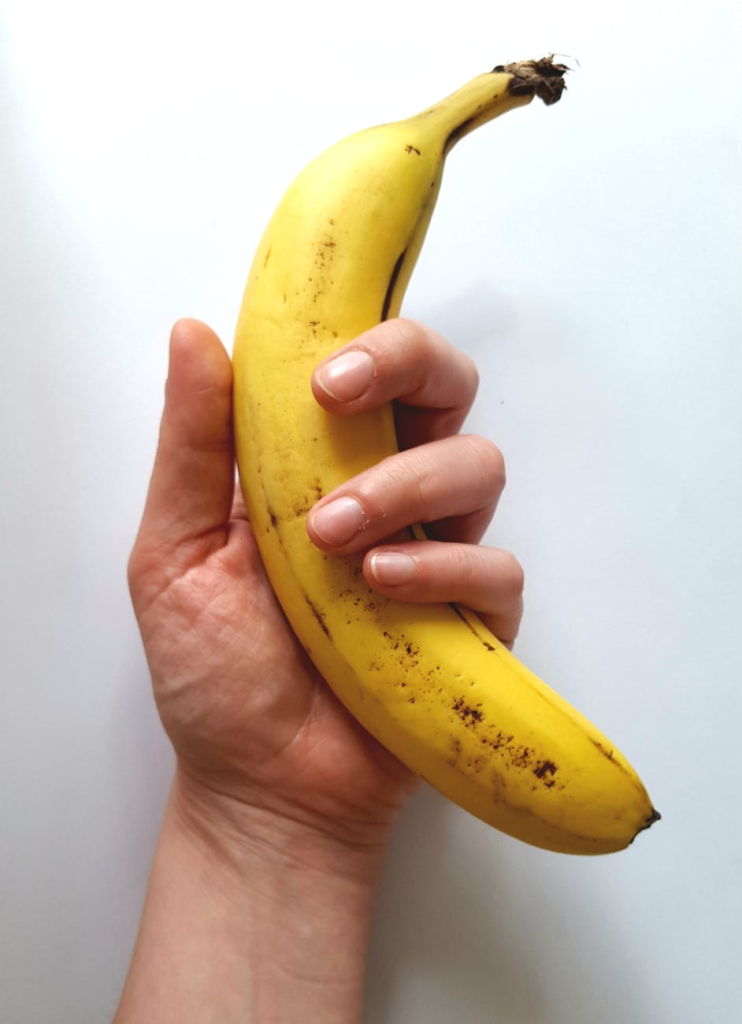
If I can walk into a modern-day grocery store and easily find different varieties of apples ranging from Granny Smith, Red Delicious, Fuji to Honeycrisp apples, why is it so hard to find different types of bananas in the Western world? There are many cultivars of bananas enjoyed around the world ranging from Musa velutina, a type of fuzzy and stubby pink banana, to Blue Java, a cold-tolerant cultivar that has an ice cream consistency and appears blue when unripened.

Musa Valentina by QZ
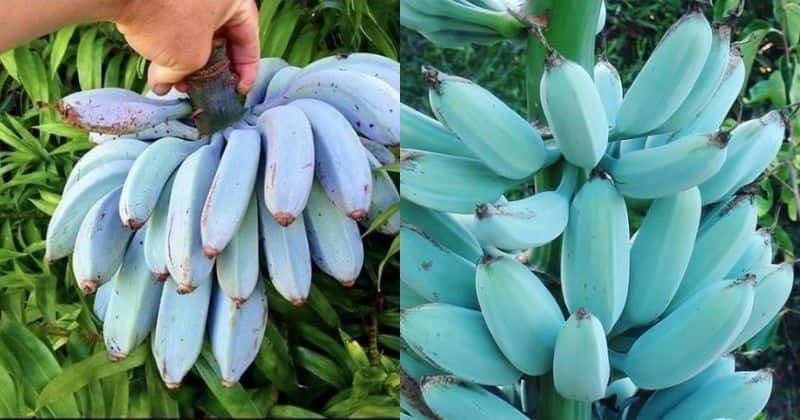
Blue Java Bananas by Shared
The banana is the world’s most popular fruit and accounts for ¾ of the world’s tropical fruit trade. In fact, it is the fourth most valuable food crop in the world, only standing behind wheat, rice and milk. For something so popular, why aren’t more cultivars of bananas seen in American grocery stores?
We first have to understand where bananas are grown. Bananas grow best in hot humid climates such as the tropical regions of Africa, Latin America, the Caribbean and the Pacific. This means that most of the bananas you see in the United States are not grown on US soil, but actually imported from elsewhere. In fact, most of the bananas grown in the world are consumed where they grow, and exports only make up 15% of the global banana output. The reason that most banana exports are of the Cavendish variety that American consumers are so familiar with is a story of hyper-optimization.
Compared to some other banana cultivars, Cavendish plants are short, so they don’t topple over easily in a hurricane. The Cavendish is considered slightly mild in flavor compared to some other cultivars, and thus more palatable to global consumers. Its long shelf life makes it easy to ship and store.
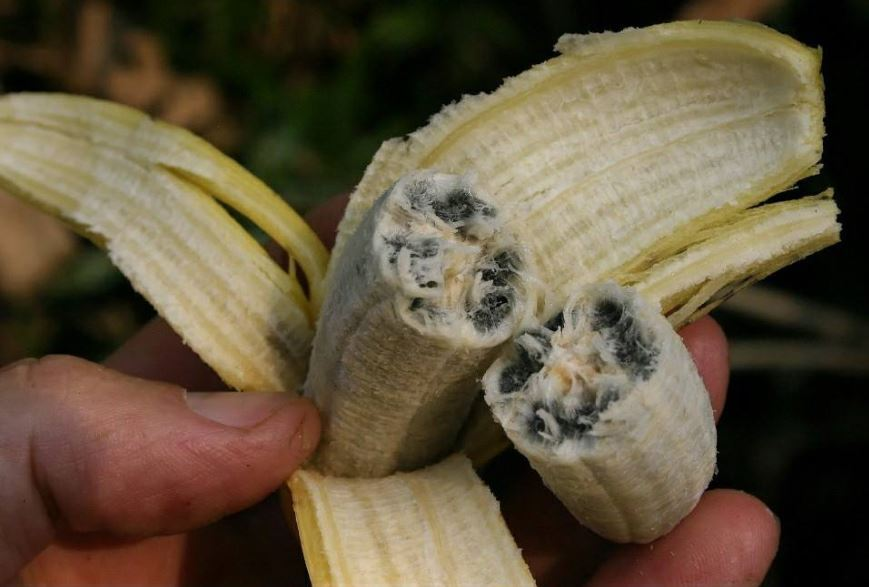
Wild bananas have seeds which allow them to reproduce sexually (Image Source)
Moreover, while many wild banana cultivars have seeds and are sexually reproduced, the Cavendish cultivar is seedless and thus sterile. This means that Cavendish bananas need to be propagated by cutting – essentially cutting off the stems, roots or leaves of an existing plant and using them to start new plants. How does that look like exactly? New banana plants develop at the base of the plant and are called banana pups, also known as suckers. These can be removed and planted to grow a whole new banana plant. To give an analogy, that is equivalent to someone cutting off a small part of you and using it to grow another you who is genetically identical.

Imagine if there are millions of you around the world… (Image Source)
Since most of the Cavendish grown in the world are essentially clones of one another, this makes them an ideal crop to grow on a large scale. Farmers know exactly how a plot of banana crops would respond to a certain level of pesticide, how the bananas would fare after five days of refrigerated transport, etc. In short, uniformity makes farmers’ jobs easier – they make bananas predictable, facilitated systemized ways of harvesting, transportation and storage, and ultimately driving bottom-line growth.
However, uniformity can also kill.

Banana plant infected with the Panama disease TR4 (Image Source)
The greatest threat to banana plantations for the past century is probably the Panama disease, a wilting disease caused by the fungus Fusarium oxysporum f. sp. Cubense. This soil-borne fungus has been a major concern in the past and is rearing its ugly head again. In recent years, the Tropical Race 4 (TR4) strain of the Panama disease has been wreaking havoc in banana plantations.
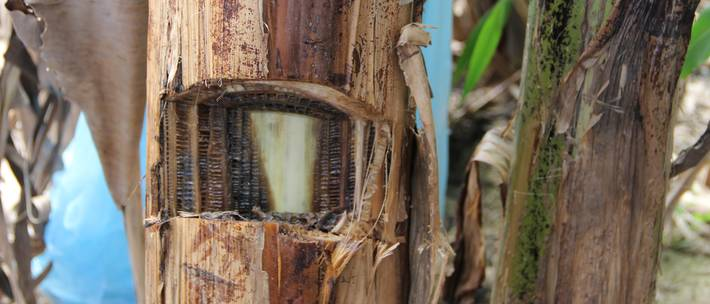
TR4’s attack on banana plants (Image Source)
The Fusarium spores infect banana plants and colonize their xylem vessels, restricting the flow of water and nutrients. This results in blackened and discolored vascular tissue in the plant, and ultimately the plant is destroyed. Not only can this soil-borne fungus be transmitted through planting materials, shoes, vehicles or through water, the fungus can remain dormant in the soil for over 30 years until a susceptible banana plant is planted nearby (silent, but deadly!). There is currently no viable fully effective treatment of either the plant or soil to control for TR4. Thus, the best management practice right now to quarantine infected plant material or soil and prevent transfer into TR4-free areas.
You might be wondering – No biggy, it’s just bananas. While for some of us, bananas may represent the ultimate cheap and healthy convenient food or something to give your morning smoothie more body and texture, bananas are an economically important crop for much of the world. Bananas form a significant portion of export revenues for many Caribbean and Latin American countries. For instance, banana exports alone make up about 25% of Ecuador’s total non-petroleum exports. In Ecuador alone, the banana industry is reported to generate 2 million direct and indirect jobs.
Besides being a major source of income for many households, bananas are also a source of food security and nutrition for many people. Nearly nine-tenths of the world’s bananas are eaten in poor countries. At least 400 million people rely on bananas for 15-27% of their daily calories.

Cavendish banana plantations (Image Source)
The Panama disease TR4 was first discovered in Taiwanese soil samples as early as 30 years ago, and for a long time, its destructive power was limited to Southeast Asia and Australia. In 2013 however, cases were confirmed in the Middle East and Africa, and in 2019, the disease arrived in Latin America, where at least 70% of the world’s bananas are grown.
Part of what accelerated the spread of TR4 is the fact that many banana plantations today are essentially monocultures. The Cavendish cultivar accounts for 47% of global banana production and 99% of banana exports. Recall that the Cavendish cultivar are seedless varieties that must be propagated by cutting, essentially resulting in every banana plant being genetically identical. The lack of genetic diversity means if you can find a virus that can kill one plant, you can kill them all.
We only have to look back to the 1950s to see how this has already happened once. Prior to the proliferation of the Cavendish cultivar, most of the world actually enjoyed bananas of another variety – the Gros Michel. This was the standard banana sold in the US from 1870 until the late 1950s, when the Panama disease wiped out many plantations. Many say that Gros Michel tasted far superior to Cavendish. One person on an online banana forum even offered to pay an arm and a leg just to try at Gros Michel banana.

The Gros Michel banana (Image Source)
Similar to the Gros Michel, the monoculture of Cavendish makes them vulnerable to attack. While it is easy to condemn monoculture, current supply chain systems make it very expensive to cultivate multiple varieties of bananas. The banana infrastructure today from propagation, to harvesting, transport and storage have been thoroughly optimized for the Cavendish. This is what makes it possible to get a banana at Walmart for just 19 cents (still incredible every time I think about it).
It may seem like the days are numbered for Cavendish, but nonetheless, researchers around the world are trying to save this particular type of banana that many of us love around the world. A group of researchers in Australia has taken a gene from a wild banana (that is resistant to TR4) and inserted into the Cavendish cultivar to produce bananas that are more resistant to TR4. The Honduras Foundation for Agricultural Research in La Lima has spent over three years developing a TR4-resistant variety that can resemble the Cavendish as much as possible. Leena Tripathi, a molecular biologist at the International Institute of Tropical Agriculture in Kenya is using gene-editing tools like CRISPR to suppress certain Cavendish genes that make them susceptible to TR4.
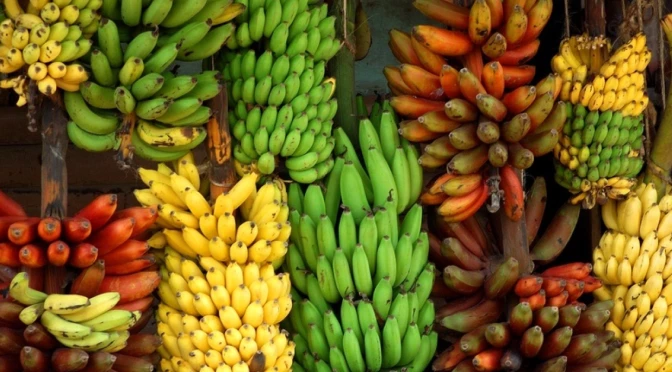
A selection of many banana varieties (Image Source)
Who knows what the future will look like? Perhaps we will move to a model of multicultures, albeit at a higher cost to consumers. Perhaps there is a scientific workaround, we save the Cavendish and monoculture continue to persist. Perhaps we find another variety that is equally palatable, shippable and scalable. Nonetheless, the threat of losing our easy access to affordable bananas really drives home how convenient our lives have been made by the global scale-up of banana production.
 Amanda Sia | Linkedin
Amanda Sia | Linkedin
Former IFTSA VP of Digital and Social Media (2018-2019)
Amanda graduated with her M.S. in Food Science at The Ohio State University. Her research focuses on using vibrational spectroscopy data to build predictive models for use in quality assurance settings. Amanda received her B.S. in Food Science from University of Minnesota (a shocking change of environment since she is originally from Malaysia, a very tropical country). When she is not scanning peanuts in the lab, Amanda likes to play squash, sing in the shower (sorry housemates), watch sappy Korean dramas, and play the guitar.
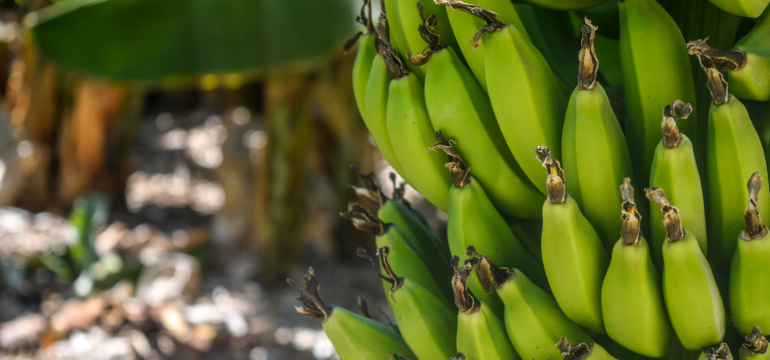





Your article is well done, but for the picture captioned “Bananas infected with the Panama disease TR4”. This is in fact a picture of a wild banana with seeds, not a banana infected with Panama disease. Panama disease does not affect the fruit at all. It affects the plant’s vascular system cutting off nutrients, which in turn means the plant will not produce as much fruit. But the fruit an infected plant does produce is fine to eat.
Hi Jared, thanks for the heads up on the image. The author picked that image from this news article, where they labeled it as panama disease. We will change it soon.
https://www.pri.org/stories/2014-04-28/banana-you-eat-your-breakfast-may-become-lot-harder-find-and-more-expensive
Best,
Bryan